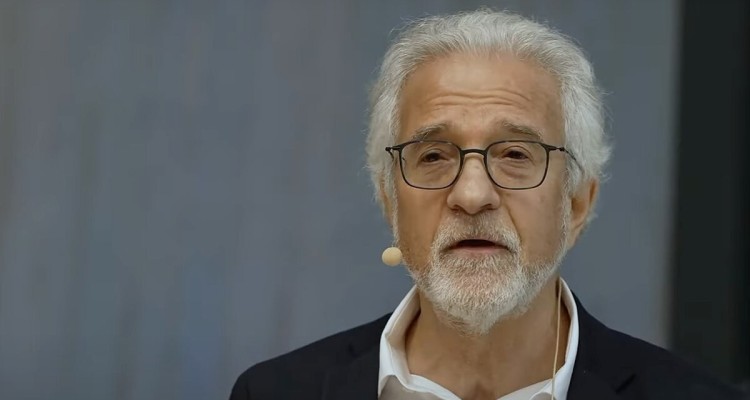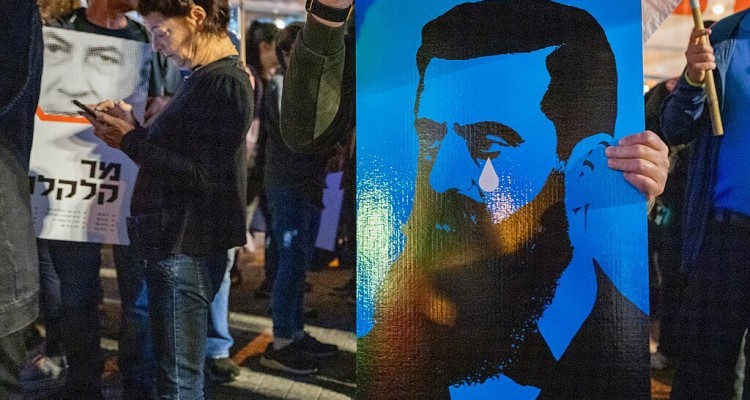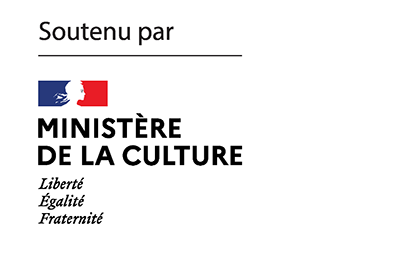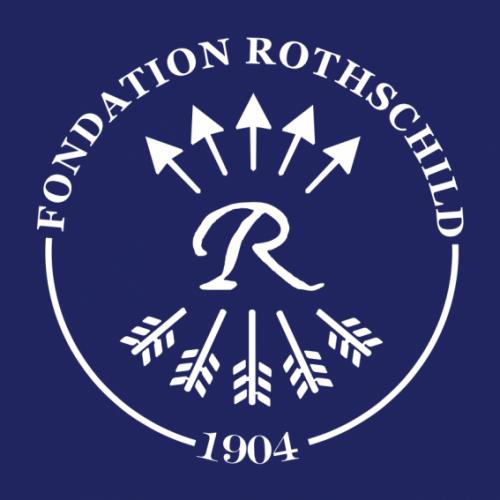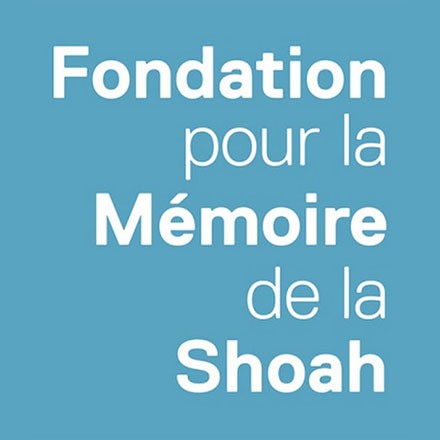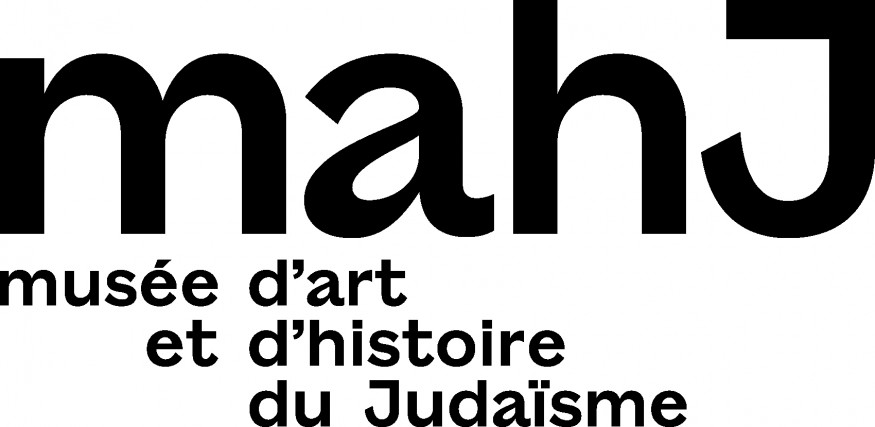Benny Mer is a longtime literary journalist for the Israeli daily Haaretz and a specialist in Yiddish culture. He has translated into Hebrew some of the works of Sholem Aleichem and Avrom Sutzkever. He has published Smocza: A Biography of a Jewish Street in Warsaw[1]. A Smocza street exists today, rebuilt in the shadow of the pre-war one; but Benny Mer’s street, one of the poorest in the Jewish Warsaw of the 1930s, has disappeared with the ruins of the ghetto. Like an archaeologist, the street’s biographer exhumes it by tracking down all the traces he can gather (in the press, in poetry and fiction, in the rare photographs that remain, in the testimonies that the author could collect) to give an idea, an image, a reminiscence of Smocza, which he loves like a ghost that beckons you. K. is happy to publish the first chapter of Benny Mer’s investigation of this vanished world, which he says he feels at home in.
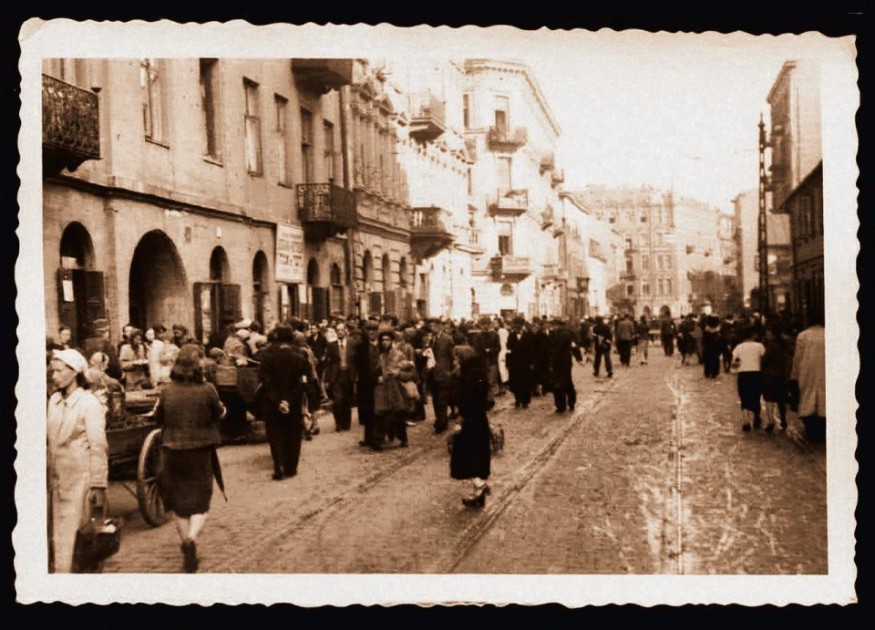
“Before the war, Smocza Street was not beautiful, not pleasant, and not safe. Most Warsovians knew of the it from police reports: ‘In the yard outside house number 29 a fight broke out between two individuals. One bit the other’s nose, that of the sixteen-year-old Srulov Merhanow. The ‘cannibal’ escaped. The disfigured Merhanow was taken to the hospital.’” (Kurjer Warszawski, 5 January 1927.)
This description appears, unsurprisingly, in a chapter entitled “The Non-Pretty Street: Smocza,” in the book Zydoswski Muranów I okolice (Jewish Muranów and its Environs), published in Warsaw in 2012. And yet it is still heartening to find mention of the name, as Smocza Street is virtually absent from the annals of Polish letters in the period between the two world wars. Searching for any and all mentions of this modest strip of road, I came to treasure every reference, even of the unsavory sort. It seemed as though not a single Pole and not a single tourist ventured out into the wilds of Smocza or any of the other streets that made up the Muranów neighborhood of northern Warsaw—an insularly Jewish neighborhood that looked out on the non-Jewish streets of Warsaw as “yaneh gassen” (those streets). Most tour guides—Polish and foreign—stopped at Krasiński Square, on the border of the neighborhood. Only a few dared to escort their intrepid clients into the Great Synagogue of Warsaw, a majestic building on the edge of the neighborhood, on Tłomackie Street. Nalewki, the most typically “Jewish” street in the neighborhood, an avenue teeming with life—businesses, schools, small factories, news rooms and a variety of residents—went largely unseen.
The Petit Guide de Varsovie (The Small Guide to Warsaw), published in French by a Polish tour operator, describes the neighborhood as such: “Nalewki is primarily a district of commerce, inhabited mostly by Jews. Row after row of giant buildings, overflowing with all sorts of merchandise from the basement to the attic, preserving a distinctive character. The residents of this borough have remained faithful to tradition, and, in so far as commerce is concerned, most of them scrupulously observe the mores and traditions of the Orient.”
The Polish name of the street, ulica Smocza—Dragon Street—is discomforting. It is, in the few Polish-language references that remain, depicted as poor, decrepit, and dirty, a street that non-Jews, and certainly tourists, ought to avoid. And yet one foreign visitor, the French writer and journalist Albert Londres (1884-1932), sought out the street and its environs in 1929; in his reported book on the state of the Jews, Le Juif errant est arrivé (The Wandering Jew has Arrived), he described the neighborhood with some shock: “Immediately, streaming out from Smotcha, Dzika, Gesia, Stawki, Mila, Pokorna, Muranowska, Pawia, Zoliborska Streets, emerging from underground caves and corridors, still unexplored by Gentiles, tumbling down ancient rickety stairs, leaping from passageways, alleys, and dead-end streets, springing from squares, running from markets, abandoning stores, rushing out of houses of prayer, prayer shawls still on their heads and phylacteries still on their foreheads and arms, three hundred and sixty thousand caftans, sporting short boots and flat hats, beards flying, waving their hands like flowers, would have streamed down Nalewki…” (p. 109)
Later in his voyage, Londres toured the Holy Land, in Palestine, and just as he was taken with it and its new Jews, so too was he put off by the old Jews of Eastern Europe. The following description, written upon entry to a hall of Torah study in Jewish Warsaw, seems to convey the distaste: “The smell is particularly Jewish…a mixture of essence of onion, essence of salted herring and essence of caftan fumes like the coat of a sweat-drenched horse.” (p. 117)
In Hebrew, too, Smocza was generally cited with disdain, often in association with poverty, crime, and the horrors of the Warsaw Ghetto; visitation, though not strictly forbidden, was hardly recommended. In fact, one can hear the echo of Londres in the words of A. Steinshleifer, who visited Warsaw on 31 August 1938, and wrote his report in the pages of the Hebrew paper, Haboker, (page 4): “I pass Nelewki, Nowolipki, Smocza, Karmelicka, Gęsia Streets and others. Here the official language is Yiddish. Jews in long black caftans and black hats are bustling on their way, running in every direction, hands flying here as mouths move incessantly. […] One of the alleys is doused entirely in the sharp smell of fried onion”—and so on and so forth.
So why Smocza, of all places?
As I arrived at this street, almost everyone asked me that question. It’s an understandable sentiment and yet I didn’t always have patience to explain. Especially since it sounded so familiar. I recognized it from another realm of my life: Yiddish. I’m asked over and over again, why Yiddish, and maybe, at long last, I can answer both questions with a single response. Because Smocza is the Yiddish of the streets. Smocza was not the most important and certainly not the most beautiful street in Warsaw. And yet it was a microcosm of an entire world, and of Jewish life specifically, between the two world wars.
This is not mere rhetoric. Many of the buildings on the street consisted of three structures erected in a U-formation, each four or five-stories-high, surrounding a large square or two. With approximately one family per room, or room-and-a-half, the structures were home to roughly one-thousand people; in other words, on Smocza Street, where there were 62 such buildings, tens of thousands of people lived—the population of a small city in Israel. We may say then, in the spirit of micro-history, that the street carried the genetic heft required by an historian or author. One street, not particularly central, not particularly privileged or pedigreed, utterly unlike Grzybowska or Twarda, where the rich of the community lived, nor as fabled as Krochmalna, which Isaac Bashevis Singer and Janusz Korczak called home. But like the linguistic and cultural kaleidoscope of Yiddish, a language in which surprising and beautiful combinations are created, so too in Smocza: a dense and complex swirl of sights, smells, voices of Poles and Jews of every sort: Orthodox, Laborite, Zionist, Communist, and ordinary rank and file. That is why the street is not to be called in these pages by its scary Polish name—Smocza—but rather by its spoken name in Yiddish—Smotshe; as is often the case, the Polish ‘a’ is replaced with an ‘e,’ lending the word a softer, rounder sound, a diminutive, nearly a term of endearment.
The Yiddish writer Leib Malech (1894-1936), who traveled from Paris to Poland twenty years after leaving his homeland, visited Smocza and wrote: “This is where the Jewish luftmensch lives, the dreamer and the workman, the laborer and the small craftsman. The darkness in these streets is dense. Even when the sun is shining and shedding light, it’s gloomy here and sad. […] In every place—garbage. […] People living on beds and beneath tables.”
The historian Jacob Shatzky in his history of the Jews of Warsaw, wrote, “The visitor from without, the tourist and the journalist, describe the Jewish ghetto as a den of poverty. But that was only partially true.” Certainly, for a street like Smocza, a first impression can prove misleading. A street like this demands a prolonged glance; one must first grow accustomed to the crowds and the smell, one must live along its length to find the richness in the scarcity and the light amid the gloom, and only in that way can one discover the unique features. The inner topography of Smocza is unlike that of the neighboring streets: Gęsia, Dzika, Ostrowska, or Miła, for example.
In our minds all of these streets have melded into one, a dead end at the intersection of Diaspora and destitution. The photographer Roman Vishniac, who in 1935 set out on a photographic journey through the Yiddish-speaking lands of Eastern Europe, left behind, as the final grains of sand were running through the hourglass, a rich documentation of Jewish life. But he too, like Albert Londres, did not discern between villages in the Carpathians and Socialists in Lodz, an academy of Torah learning in Munkács and a modern school in Warsaw. The land of Yiddish occupies a single plot in the collective memory. Every street has a name, one could say, certainly of a street that was swallowed up by the earth, and not just metaphorically. But in Vishniak’s book of photos, for instance, it’s impossible to know where the photo of the curious girls at the gate was taken. Vishniak left no inscription on the back of his photographs. Despite the strong temptation and the knowledge that a child is a child wherever he or she may be, I abstained from using those photos here because I wanted to specifically address the singularity of Smozca. Only when looking closely, marshalling a proximity of every sort, can the essence be uncovered. Because in today’s Warsaw there is a street that carries the name Smocza, and it traces nearly the same route as the street that existed before the war, but in the new Smocza there is nothing that is as it was prior to 1945: not a single house, not a single resident.
In recreating the street, I’ve been assisted by those who knew it intimately: journalists, authors, and children who once ran through the yards between the building complexes and today are in their ninth and tenth decades of life. For example, Mosheh Zonsheyn (1906-1960), a very Warsovian author, who wrote about Smocza in his book Yiddeshe Warsaw (Jewish Warsaw): “There were days when people of ‘a better sort’ avoided this street entirely and did not want to live on it. It wasn’t the street’s fault. It suffered on account of its nearness to the ill-reputed streets of Ostrowska and Stawki. Smocza was the people’s street.”
I adore not only his precise definition of Smocza, but also Zonsheyn’s decision to put quotation marks around the description of people of “a better sort.” Had I been interested in those people, I’d have written about Paris or Berlin. I did not choose Warsaw for her beauty. I leave to others the joy of documenting the famed metropolises and the elegant avenues. What prompted me to comb the annals of Smozca Street was the insult, the belittling of the kleineh menschelech, the commoners, who could have been my grandfather and grandmother.
In Tel Aviv, near the central bus station, there’s a street called Neve She’anan. It’s full of foreign workers and is often avoided by the locals. Smocza was something like that. The poles, like the Tel Avivians of today, steered clear of the area, felt it to be a foreign enclave, at times even a forbidding one, a small piece of Africa within their own country, and not just in color and scene but also in sound and smell. For the poles of the early twentieth century, Smocza was a no-man’s land. Just as I had a hard time finding material about Smocza in the Polish archives, so too will a future Sudanese or Eritrean researcher struggle to find, in Tel Aviv’s municipal archive and in Jerusalem’s national library, much about the African population that lived here for many years. The chronicles of the community, as found in the Hebrew papers, will consist of a litany of local crimes. But for kids growing up there, Neve She’anan is an entire world, encompassing the good and the bad.
I do not live in the Neve She’anan neighborhood, just as, though by no means comparing us, Shalom Aleichem did not live in Kasrilevke, the fictional shtetl in which he set his greatest work. Having translated Shalom Aleichem and some of the other towering Yiddish poets, such as Avraham Sutskever, I’m coming home, to the people I feel most comfortable with.

One time, as a child, I went with my grandmother, Feigeh, to the wife of Rabbi Halberstam. The rebbetzin lived in a rundown, one-floor house on the outskirts of Bnei Brak, on the far edge of Rabbi Akiva Street, and though she was younger than my grandmother, she seemed to be her senior. Like my grandmother, she spoke Yiddish and had blue eyes. The rabbi’s wife was poor and lived hand-to-mouth, but during this visit she suddenly asked me to take a wooden box down from the high, dark-wood shelving in the room, and when I put it in her hands she removed an ornament that stirred up wonder and jealousy—a bejeweled head covering. Later in life I learnt that it was called a sterntichel (a pearl kerchief) and wealthy Jewish women wore them on occasion. But it faded out of fashion in the twentieth century and by the eighth decade of that century it was a rare privilege indeed to own such an item. I have no idea how that piece of jewelry survived the rebbetzin’s many misfortunes but I do remember that she handled it coquettishly and mentioned her esteemed lineage. Then she turned to my grandmother and asked her about her background. “My lineage is not esteemed,” my grandmother said in a choked voice, “but my parents were ehrlicheh yidden” (honest Jews).
There’s a reason I mention that story here. The name Halberstam was raised in The Lost World: Polish Jews, a photo album published in 2015 by the Jewish Historical Institute of Poland (JHI). In that book I came across a photo of Rabbi Sinai Halberstam, the Rebbe of Żmigród. Treating this research with the utmost caution, I consulted the book of Talmudic explication that Rabbi Halberstam of Bnei Brak once gave me on the occasion of a visit to their home. And there, on the title page of the book, Aryeh Sha’ag, was the proof. The author, Rabbi Aryeh Leibush Halberstam, the page read, was the “son of our Rabbi Sinai AB”D (head of the religious court) of Żmigród.”
Others may be drawn to explore the lives of those pedigreed men from the house of Halberstam, but I prefer to focus on the unnamed and the un-pedigreed people of town.
*
And why Smocza in the period between the world wars, mostly in the fourth decade of the twentieth century?
In the mid-thirties the Jewish community in Warsaw was the second largest in the world, after New York City, with 375,000 Jews, roughly a third of the total population of the Polish capital. During those years the endeavors of Polish Jewry reached an apex—less in terms of status and wealth, since from 1935 on, with the death of Józef Piłsudski and the rise of the nationalist parties to power, most of the Jews saw a downturn in their finances and an uptick in anti-Semitic incidents. Heavy taxes were targeted at the main Jewish sources of employment—commerce and craft. Educationally, the Polish universities made it difficult for Jews to attain an academic degree and the Jewish representation within the student body plunged from 21.5 percent in 1925 to 8.2 percent in 1938-9. But the difficulties spawned an array of political and social activity in Poland. Many of the country’s Jews, from that point on, leaned toward one party of another: Agudath Israel, Mizrachi, Bund, Communist, Zionist, etc.
The distress of Polish Jewry, then numbering some three-and-a-half-million people, is starkly illustrated in the book Youthful Plots: Autobiographies of Polish-Jewish Youth, which is comprised of Yiddish, Polish, and Hebrew-language first-person accounts by Jewish adolescents in the years 1932-1939. It’s a rare, first-hand source depicting that great period in which the leaves in the forest of Polish Jewry began to turn color. Nearly each and every one of the teens felt in his or her bones a certain metamorphosis take shape and the authors’ accounts are filled with the feeling that they’ve eaten of the tree of knowledge, grappling with the pain of an opening consciousness, the agonies of secularity, sexuality, nationalism and class. The youngsters raised in an independent Poland were the first generation given access to compulsory education in state-funded schools, and this, especially for the girls, who had been cloistered in ultra-Orthodox schools or saddled with housework, explains why the restrictions came as such a burden. “Why must I be stifled by the straits of obligation,” wrote a woman identified only as Esther, “when everything within me yearns for the wide-open horizon?”
This was a fertile period for Jewish writing, with dozens of journals and dailies appearing in Yiddish, Polish, and Hebrew and an impressive yield of books in Yiddish. There were at least five active Yiddish theaters in Warsaw alone (including one on Smocza Street, as discussed in Chapter Nine) and an array of institutes of Torah study. Smocza was inculcated with faith and culture, wrote the journalist Mordechai Tsanin:
“With all of the wrongs done to it, Smocza knew how to make merry. In the evenings, the masses poured out toward the Jewish theater in Smocza as though all who crossed that threshold were granted liberty and happiness. Amid the density of Jewish Warsaw, from Leszno to Muranow and Stawki, from Smocza to Prata, there were hundreds of literary guilds and libraries, halls of study and halls of prayer, theaters and cinemas, reading rooms and newsrooms, an entire world of Jewish spirituality, a world yearning for knowledge and freedom, limitless longings.”
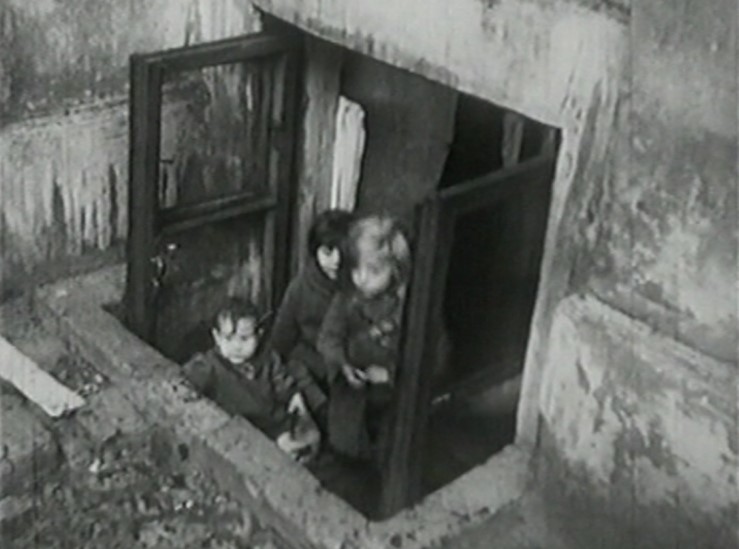
Those strains of life are what I’ve tried to capture here—the life that would soon be extinguished by the Holocaust. I’ve opted not to turn my gaze straight at the horror but rather to see it obliquely, encountering the before and the after. And mostly that which preceded the genocide: the daily, routine life of Smocza Street. The singular, Smocza, can teach of the plural—Jewish Warsaw between the two world wars, but the similarities are evident only amid the differences. I also do not intend to praise Smocza over all other streets, even though during the course of my research I developed a natural affinity for “my” street. The Smocza of old has been so forgotten that even if I am able to touch its vitality—both the good and the bad; if I am able to draw lessons about the present and the future—then I feel that I have met my goal. I’ve given voice to Smocza just as I would like for someone else to give voice to the story of any other community on any other street—in Baghdad or in Jerba.
Perhaps this is also an opportunity to write about the biographical motive: the fourth decade of the previous century is the farthest back I can reach; is the terminus of the memories of those who still live among us. Particularly that of my father, Bezalel, who was born in Poland in 1932. He came into this world in Pułtusk (which is not far away from Warsaw but is of a fundamentally different nature) and never even visited the big city in his youth, but this body of research is also an attempt, albeit a late one, at trying to understand him, to grapple with who he is while accepting and knowing that we are not all that different—he and I, and us and them.
Smocza is mentioned hundreds if not thousands of times in the press and in books, mostly in Yiddish but also in Polish and Hebrew. News from Smocza was rarely printed on the front pages (that lofty real estate was reserved for world affairs), but rather toward the back, tucked in amid the local news from Warsaw. Every mention of the street is in and of itself a small story and herein I try to gather those jewels together and string them into a larger tale, the biography of a street. Along the way I found several photos—far fewer than the number of news pieces and stories—and even a single, very short video. Some will be depicted here, alongside the relevant maps. The meager documentation—the result of the destruction of the municipal archives, along with the city itself—means that the press is an important source of information. as Jerzi Majewski wrote in the preface to his book, Jewish Muranow and its Surroundings. Most of the quoted material here is from the Yiddish papers—both because Yiddish was the main language spoken on the street and because the street was of little interest to the Polish-language readers—aside from reports about the atypical, such as crime, while what I sought was the quotidian.
The Historical Jewish Press, a crucial and essential online archive run by the National Library of Israel and Tel Aviv University (with support from Beit Shalom Aleichem), rendered the newspapers of Warsaw available to me. The thousands of titles scanned and digitally archived in the National Yiddish Book Center and the precision of Google’s Advanced Book Search helped me zero in on Smocza Street and find mention of it in new and surprising contexts. Not all of the relevant papers were scanned and made available online, though—the absence of the Nayeh Folkszeitung, the daily paper of the General Jewish Labour Bund in Poland, and the Orthodox papers was keenly felt while compiling this work. By the time I started writing, I had missed the opportunity to speak with most of the street’s residents. Yet the digital options allowed me to meet some of them on the page. We can only hope that further archival advances—at Yad Vashem and elsewhere—will add old and new layers of understanding.
A scarcity of sources by and about women on Smocza Street barred me from properly depicting their world; aside from a smattering of insufficient mentions, the papers and the literary works of the time focused more squarely on men. Maybe one day a researcher will find a way to recreate their world, highlighting the roles played by women and other marginalized figures. I hope to see that happen.
Beyond the press clippings and the literary references, the book includes archival material from Israel and Poland as well as written and spoken testimonies—the result of meetings with former residents of Smocza and their offspring. I avoided using complimentary imagination in this book. Despite the chronological framework—Smocza between the two world wars—I chose to tell the story of the street by traveling from house to house, from 1 Smocza Street, on the corner of Nowolipie, to 62 Smocza, on the corner of Stawki. I serve here as a tour guide, a role that dictated the decision to narrate in the first-person. It seemed to me that this is the best way to get to know the street and its residents—on a gradual, cumulative trip in which the characters come and go, sometimes right before our eyes. And yet there are three topical chapters (along with the historical introduction), which could not be expressed through a geographic procession: children and education, relations between Jews and Poles, and the writers of Smocza.
Finally, I must reveal my key to the gate of the street: the first time I heard the name Smocza. It was in a line in a Binem Heller poem. There, in the heart-wrenching “Mayn Schvester Khaye” (My Sister Khaye), he mentions the “house on Smotshe Street with tumble-down steps.” Chava Alberstein put the poem to music and sang it with the Klezmatics on the sublime 1998 album “Di Krenitse” (The Well). I think that before the album came out, I saw Alberstein perform it on the French-German TV channel ARTE as a new synagogue on Oranienburger Straße was initiated on a cool summer night in Berlin. I will yet return to the poem and its creator in the final chapter. In the meanwhile, I’ll say that if I traipsed up and down Smocza Street it was for the same reason that Binem Heller continued to toil in in the tower of Yiddish verse while living in Israel: Because he could not let it be forgotten.
My sister Khaye, her eyes were green,
My sister Khaye, her braids were black—
Sister Khaye, it was she who raised me
In the house on Smotshe Street
With tumble-down steps.
Mother left the house at dawn
When the sky had hardly lightened.
She went off to the shop, to earn
A wretched penny’s worth of change.
And Khaye stayed with the boys,
She fed them and watched over them.
And at evening, when little kids get tired,
She’d sing them pretty songs.
My sister Khaye, her eyes were green,
My sister Khaye, her hair was long—
Sister Khaye, it was she who raised me,
She wasn’t even ten years old.
She cleaned and cooked and served the food,
She washed our little heads,
All she forgot was to play with us—
Sister Khaye, her braids were black.
My sister Khaye with her eyes of green
Was burnt by a German in Treblinka.
And I am in the Jewish state,
The very last one who knew her.
It’s for her that I write my poems in Yiddish
In these terrible days of our times.
To God Himself she’s an only daughter,
She sits in heaven at His right hand.
This poem is like the ad that caught the eye of the writer Patrick Modiano, placed in the evening paper in Paris by the parents of a young teenage girl who fled a French monastery in December 1941 and disappeared. Just as the book Dora Bruder attempts to trace her steps so too is Smocza an elegiac search for a lost street. Several years after Modiano, the American writer and scholar Daniel Mendelsohn published his own work The Lost: A Search for Six of Six Million—an attempt to recreate the lives of his grandfather’s brother, his wife, and their four daughters.

In truth, the dead are destined to be forgotten, but Smozca is a desperate attempt to fight this decree. Not least because most of the residents of the street did not die natural deaths. Many of them were put to death in the streets of the city’s ghetto and on the grounds of the Treblinka concentration camp. Many are not even found on the central data base of victims kept by the Yad Vashem Holocaust remembrance center and many had no Binem Heller to immortalize them.
Lost people must be looked for—and that’s what I’ve tried to do here.
Benny Mer
Translated from the Hebrew by Mitch Ginsburg
Notes
| 1 | In Hebrew, at Beit Shalom Aleichem and Magnes Press Edition, 2018 |

